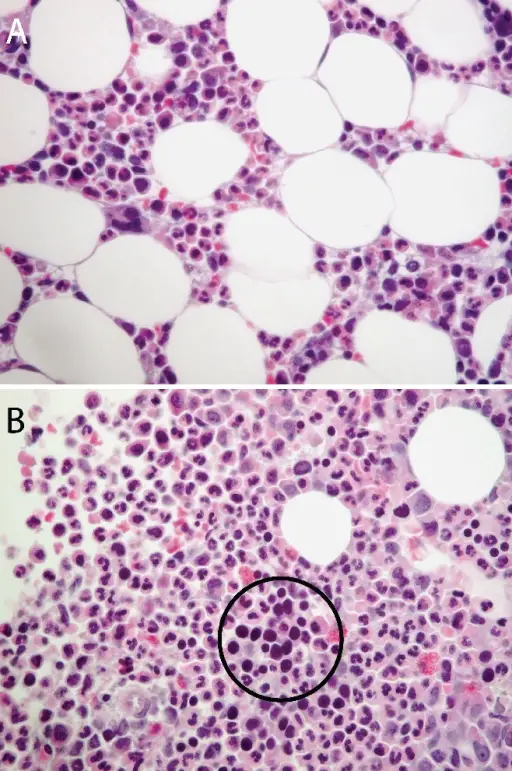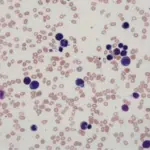Pure red cell aplasia is an erratic type of marrow failure featured by a marked marrow erythroid elements hypoplasia in the setting of typical granulopoiesis and thrombopoiesis
What is the Pathology of Pure Red Cell Aplasia?
The pathology of pure red cell aplasia is:
-Etiology: The cause of pure red cell aplasia is idiopathic, secondarily to infections, neoplasms, drug exposures, or autoimmune disorders.
-Genes involved: None.
-Pathogenesis: The sequence of events that lead to pure red cell aplasia due to a discerning injury, often immunologic, affecting the initial phase of erythrocyte maturation.
-Morphology: The morphology associated with pure red cell aplasia shows erythrocytosis.
-Histology: The histology associated with pure red cell aplasia shows normocytic cells.
How does Pure Red Cell Aplasia Present?
Patients with pure red cell aplasia typically have no gender prevalence present at an age range of childhood and adulthood. The symptoms, features, and clinical findings associated with pure red cell aplasia include uncompensated anemia, bruising, enlarged parotid glands, and altered growth.
How is Pure Red Cell Aplasia Diagnosed?
Pure red cell aplasia is diagnosed through laboratory studies-CBC count, reticulocyte count, (WBC) differential analysis of WBCs and bone marrow histology. Imaging studies- Positron emission tomography, CT scans detect thymomas.
How is Pure Red Cell Aplasia Treated?
Pure red cell aplasia is treated through transfusion, treating the underlying condition, and surgical care.
What is the Prognosis of Pure Red Cell Aplasia?
The prognosis of pure red cell aplasia is fair.



